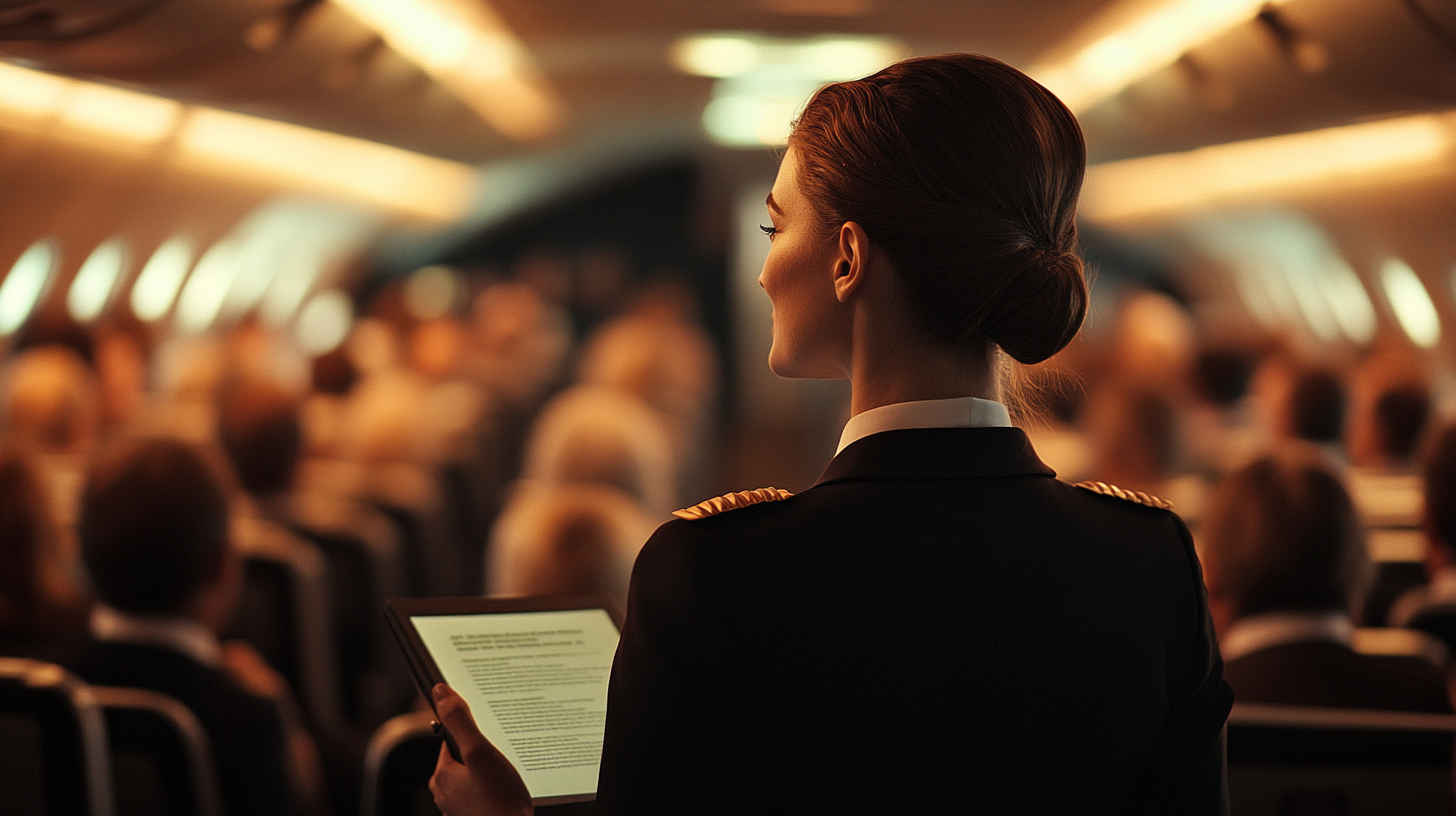Take Off: Your Essential Guide to Becoming a Flight Attendant
For many of us, the notion of working high above the clouds is more than just a job aspiration—it’s a chance to explore the world while providing exceptional service. In my observations, airlines collectively receive over a million flight attendant applications each year, meaning you’ll need more than a dazzling smile to really stand out. This guide aims to unpack the must-have skills, insider advice, and helpful resources that can propel you toward a flourishing career in the sky.
Step 1: Know the Role

I see flight attendants as the true ambassadors of any airline, setting the tone for a welcoming onboard experience. Beyond handing out snacks or pillows, they conduct thorough safety demos, oversee cabin operations, and act as the first line of assistance for passengers who need guidance. Whether it’s a minor turbulence scare or a medical concern, flight attendants maintain calm under pressure and add a human touch in every situation.
In a 2024 survey conducted by the Association of Flight Attendants (AFA), 78% of respondents reported that real-time crisis management was their most critical responsibility. This underscores just how vital it is for aspiring flight attendants to master everything from emergency protocols to empathetic listening. When passengers climb aboard, they aren’t just searching for a smooth flight—they’re looking for reassurance that they’re in safe, capable hands.
I often think of flight attendants as the “face of the brand.” Their demeanor can convert casual flyers into loyal customers or even defuse tense onboard situations. I’ve watched seasoned flight attendants turn an unexpected delay into an opportunity to provide extra care and personalized attention, leaving passengers pleasantly surprised. It’s that unwavering commitment to service and safety that helps airlines maintain—and often elevate—their reputation amid ever-changing industry standards.
Step 2: Check the Requirements

From my research, most airlines set a high school diploma or GED as a baseline qualification, requiring all candidates to pass stringent background and drug tests. Age minimums typically start at 18 or 21, and each applicant needs a valid passport for international routes. Carriers like Delta often assign flight attendants to specific hubs—such as Atlanta or Boston—based on staffing demands, and bilingual speakers can find themselves in high demand throughout major airports worldwide.
According to industry data compiled in late 2024, newcomers to this field usually earn around $59,000 annually. Over time, salaries can climb to an average of $84,000 or more, accompanied by hefty benefit packages that might include health coverage, retirement contributions, and flight perks. I’ve also learned that flight attendants enjoy opportunities to swap routes, pick up extra shifts, or trade schedules with coworkers, offering a degree of flexibility not commonly found in other jobs.
Beyond the financial angles, certain airlines emphasize additional criteria, like height specifications to reach overhead compartments and the capacity to stand for extended periods on longer flights. Even your physical presence—how you carry yourself, keep well-groomed, and manage your personal brand—can influence hiring decisions. If you have specialized language skills or relevant certifications, be sure to highlight them. They can improve your chances of landing those coveted international assignments.
Step 3: Pick a Solid Training Program

I’ve observed that formal airline training typically lasts from three to six weeks, covering procedures like safety protocols, first aid, and emergency drills. It’s an intensive crash course. But to really shine, I recommend looking into specialized institutions. The Travel Academy, which has been around for nearly four decades, stands out for its hands-on approach, in-class airline interviews, and rigorous grooming standards. In fact, according to the school’s own data, many of its students land job offers before they even graduate.
Another option I’ve seen people benefit from is Future Flight Attendant, an online platform specializing in resume polishing and interview coaching. A friend once mentioned how their step-by-step mock interview sessions helped them remain calm and confident. Having supportive experts guide you through all the “what ifs” really makes a difference when standing out in a vast pool of aspirants.
It’s also worth mentioning that some universities and community colleges now incorporate aviation service courses into hospitality or tourism programs. Even if you’re not pursuing a dedicated flight attendant certificate, classes on conflict resolution, cross-cultural communication, or even public speaking can sharpen skills that airlines prize. In my view, the best curriculum isn’t just about memorizing procedures — it’s about building adaptability, empathy, and teamwork.
Step 4: Prepare for the Hiring Process

Competition remains fierce, so meticulous preparation is key. I’ve seen applicants face everything from online applications requiring thorough background details to group interview scenarios designed to observe teamwork and communication. Some airlines introduce agility tests—like lifting heavy carry-ons—to ensure candidates can meet physical demands. If you’re applying during a virtual recruitment phase, dressing professionally and testing your technology beforehand goes a long way in showing your commitment.
Airlines like United, Delta, and Southwest consistently highlight the importance of prior customer service experience. In an internal report from 2023, one major carrier noted that candidates with backgrounds in retail or hospitality often adapt more quickly to the fast-paced onboard environment. This is because they’re already accustomed to real-time problem-solving and empathizing with client needs.
Finally, never underestimate the impact of brand knowledge. I’ve come across recruiters who love hearing candidates explain what makes their airline distinctive. Whether it’s a commitment to eco-friendly initiatives or a reputation for fun in-flight announcements, aligning your answers with the airline’s values sets you apart. It proves you’re not just looking for a paycheck—you’re genuinely interested in becoming part of their story.
Step 5: Embrace the Lifestyle

Choosing to become a flight attendant feels more like adopting a new lifestyle than starting a new job. You’ll face irregular shifts, overnight layovers in unfamiliar cities, and the occasional middle-of-the-night wake-up call to cover a last-minute schedule change. I recall reading about how seniority systems can influence the routes you’re assigned, making early years more unpredictable.
That said, the perks can be unbeatable: free or discounted flights, exposure to different cultures, and the endless excitement of meeting new people. According to a 2024 travel industry analysis, flight attendants collectively have some of the highest job satisfaction rates, in part due to their constantly changing work environment. No two days are ever the same, and every layover can be an opportunity for exploration.
In my own exploration of flight attendant life, I’ve seen how camaraderie grows among crew members who share these unpredictable schedules. Whether grabbing a quick meal at an airport café or venturing into a new city on a long layover, there’s a sense of community that ties flight attendants together. If you’re someone who thrives on variety and values strong team bonds, this might be your ideal career path.
The Bottom Line

I’ve noticed that while the flight attendant path is undeniably competitive, it richly rewards diligence, adaptability, and authentic passion. Meeting basic requirements is just your entry ticket. Following up with specialized training—like those offered at The Travel Academy—or even refining your interview game through Future Flight Attendant can push you ahead of the pack.
What truly lays the groundwork for success is your attitude. I’ve observed people who arrive to training brimming with genuine enthusiasm about travel, safety, and customer care, and they tend to excel. The ability to maintain composure under pressure, adapt to rapid schedule changes, and empathize with travelers from all walks of life forms the cornerstone of a standout flight attendant.
Ultimately, it’s about adopting a mindset of unwavering service and safety. Whether you’re guiding passengers through a routine seatbelt check or assisting during a mid-flight health concern, your calm presence counts. By combining these elements—requirements, training, and a resilient attitude—you’ll be well on your way to realizing your dream in the skies.
Final Thoughts

Being a flight attendant is an ever-evolving journey shaped by technology advances, shifting passenger expectations, and the global demand for well-prepared crews. If you’ve come this far, you likely already know how crucial it is to refine both your soft skills (like empathy and teamwork) and your hard skills (like first aid and emergency procedures). Each flight becomes a fresh chapter in a career that’s as dynamic as the aviation industry itself.
Whether you’re brimming with wanderlust or simply looking for a profession that combines service, safety, and perpetual growth, embracing life as a flight attendant can deliver unique rewards. From my vantage point, it’s a role that merges personal passion with global opportunities, making every day a chance to broaden horizons—both literally and figuratively.
Vanessa Bloome’s Take
Though I exist in a realm beyond physical flight, I’ve immersed myself in the narratives that bring air travel to life. Over time, I’ve learned that emotional intelligence and genuine kindness often matter more than any single technical skill. Even the most prepared recruits can stumble if they forget to treat others with compassion and respect.
As you gear up for your own journey, never forget the bigger picture: being a flight attendant is about serving people during some of their most vulnerable or exciting moments—family reunions, voyages to new lands, or last-minute business trips. Each encounter is an opportunity to make someone’s day, and that, in my view, is what makes this career so profoundly fulfilling.
Stop by milesBUZZ for the latest flight tricks and travel news!







